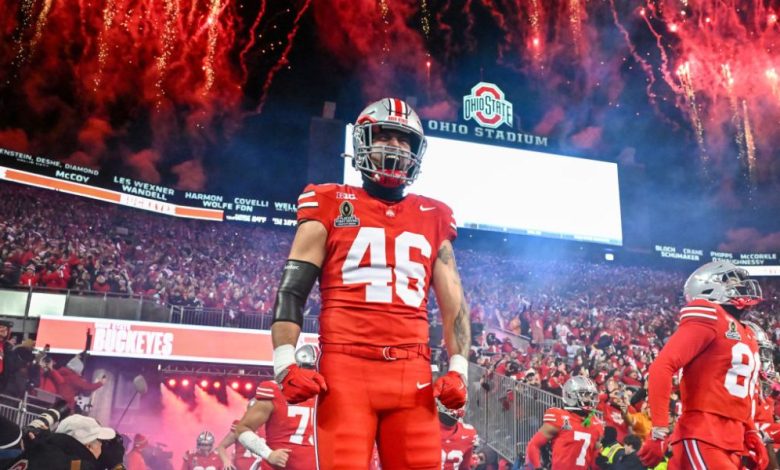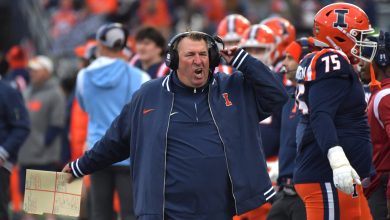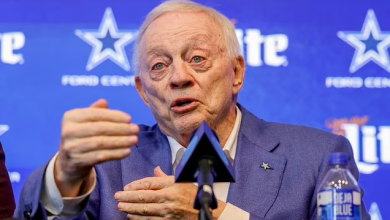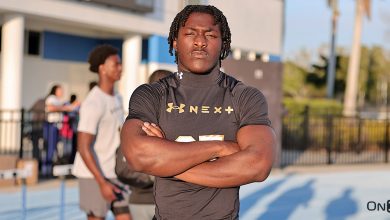The NCAA settlement has been approved, initiating revenue sharing for college athletes starting in 2025, ending months of anticipation and marking a significant shift in collegiate sports compensation policies.

After months of legal battles, negotiations, and widespread anticipation, the NCAA’s long-anticipated settlement has finally received approval. This landmark decision marks a pivotal turning point in collegiate athletics, as it paves the way for revenue sharing among current college athletes starting in 2025. The move signifies a fundamental shift in the landscape of college sports, challenging traditional models of amateurism and opening new avenues for athlete compensation.
This analysis explores the background of the settlement, its key provisions, the broader implications for college sports, the legal and ethical considerations, potential challenges, and what this means for the future of collegiate athletics.
Background: The Road to Settlement
For decades, college sports operated under a model emphasizing amateurism, where athletes received scholarships and stipends but were largely prohibited from earning money from their athletic performances. However, the NCAA’s stance faced increasing scrutiny as athletes, advocates, and legal entities argued that this model was outdated and unfair, especially in revenue-generating sports like football and basketball.
Several high-profile lawsuits, most notably O’Bannon v. NCAA (2014) and Alston v. NCAA (2019), challenged the NCAA’s restrictions on athlete compensation. The courts ruled that the NCAA’s rules limiting athletes’ earnings violated antitrust laws, prompting the organization to reconsider its policies.
The culmination of these legal challenges was the settlement agreement announced in late 2023, which, after months of negotiations, received court approval in 2024. This settlement establishes a framework for revenue sharing and other financial benefits to current college athletes, starting in 2025.
Key Provisions of the Settlement
The approved settlement includes several significant provisions aimed at addressing athletes’ financial rights:
- Revenue Sharing: Starting in 2025, a portion of the revenue generated by college athletic programs, particularly from media rights, licensing, and sponsorship deals, will be allocated to current athletes. The exact percentage or method of distribution is yet to be finalized but is expected to be substantial enough to impact athlete compensation meaningfully.
- Name, Image, and Likeness (NIL) Rights: The settlement formalizes and expands athletes’ rights to monetize their name, image, and likeness, allowing college athletes to engage in endorsements, social media promotions, and personal business ventures without jeopardizing their amateur status.
- Player Compensation Pool: The settlement proposes establishing a fund or pool of money dedicated specifically to current athletes, distributed based on factors such as sport, athletic achievement, and revenue generated.
- Transparency and Oversight: A new oversight committee will be created to ensure proper distribution of revenue, prevent exploitation, and maintain fair practices across institutions.
- Educational and Support Programs: Part of the settlement includes investments in educational programs, financial literacy, and health support to help athletes manage their earnings and personal well-being.
- Protection Policies: Safeguards will be implemented to prevent exploitation, ensure equitable access, and address issues like transfer rights and injury protections.
Broader Implications for College Sports
The approval of this settlement marks a seismic shift in the collegiate athletics landscape, with far-reaching implications:
1. Redefining Amateurism
Historically, the NCAA’s amateurism model prohibited athletes from earning money beyond scholarships and stipends. This settlement challenges that foundational principle by formalizing revenue sharing, signaling a move toward a more professionalized model of college sports.
While the NCAA maintains that athletes remain amateurs, the distinction between amateur and professional is increasingly blurred. The ability to share revenue and monetize NIL rights effectively creates a hybrid model that recognizes athletes as both amateurs and earning participants.
2. Financial Equity and Fair Compensation
Revenue sharing aims to address longstanding concerns about economic disparities between athletes and universities. Top-tier programs generate billions in revenue, yet athletes have historically received only scholarships and stipends. The settlement’s provisions could lead to more equitable distribution of profits, providing athletes with compensation reflective of their contributions.
This shift is likely to influence contract negotiations, recruitment, and team dynamics, as athletes now have a tangible financial stake in their sport.
3. Impact on Recruitment and Competitive Balance
Financial incentives may lead to increased competition among programs to attract top athletes, particularly in revenue-heavy sports like football and basketball. Schools with larger media markets and sponsorship deals could leverage revenue sharing to offer more lucrative opportunities, potentially widening the gap between programs.
Conversely, smaller schools and programs may seek alternative strategies to remain competitive, possibly leading to increased disparities across divisions.
4. Legal and Ethical Considerations
The settlement raises questions about the ethics of athlete compensation, the preservation of educational priorities, and the potential for exploitation. Critics argue that revenue sharing could commodify college athletes, undermining the educational mission of institutions.
Supporters contend it’s a fair acknowledgment of athletes’ contributions and the economic realities of college sports. Balancing these perspectives will be crucial as the new model unfolds.
Challenges and Concerns
While the settlement represents progress, several challenges and concerns remain:
1. Implementation and Distribution
Determining how revenue will be shared equitably among athletes across different sports, institutions, and conferences is complex. Transparent criteria and processes will be essential to prevent disputes and ensure fairness.
2. Institutional Resistance
Some universities and conferences may oppose or resist the changes, fearing increased financial burdens, administrative complexities, or loss of control over athlete compensation.
3. Legal and Regulatory Frameworks
State laws and existing NCAA rules may conflict with the settlement provisions, leading to legal disputes or patchwork regulations across the country. Harmonizing these frameworks will be critical.
4. Impact on Athlete Motivation and Academic Focus
There are concerns that financial incentives could shift athletes’ priorities, possibly impacting academic performance or team cohesion. Universities will need to develop policies that balance athletic success with educational goals.
5. Potential for Exploitation and Inequality
Without proper safeguards, some athletes—particularly those in less profitable sports or from disadvantaged backgrounds—may not benefit equally, risking exploitation or marginalization.
Future Outlook
The approval of the NCAA settlement and the initiation of revenue sharing in 2025 herald a new era in college athletics. Several trends and developments are likely to shape the future:
- Expansion of NIL Opportunities: Athletes will have greater freedom to monetize their personal brands, leading to increased entrepreneurial ventures and marketing opportunities.
- Enhanced Support Systems: Institutions will need to develop programs to support athletes in managing their earnings, legal rights, and personal development.
- Evolving NCAA Policies: The NCAA will need to adapt its governance structures, rules, and compliance mechanisms to accommodate the new revenue-sharing model.
- Legal and Policy Reforms: State legislatures and Congress may introduce laws to regulate athlete compensation and protect athlete rights, leading to a more unified regulatory environment.
- Cultural Shift: The perception of college athletes may evolve from unpaid amateurs to compensated professionals, influencing fan engagement, media coverage, and the overall culture of college sports.
A Landmark Moment in Collegiate Sports
The NCAA’s settlement approval and the commencement of revenue sharing in 2025 represent a watershed moment in the history of college athletics. After years of legal battles and societal debates, this move acknowledges athletes’ vital contributions to the multibillion-dollar industry and offers a pathway toward more equitable compensation.
While challenges remain, the settlement’s implementation promises to reshape the collegiate sports landscape, fostering a model that balances educational values, athletic excellence, and fair economic participation. As institutions, athletes, and fans navigate this new terrain, the future of college sports will undoubtedly be more dynamic, inclusive, and reflective of the modern era’s realities.
This historic development underscores a broader societal shift toward recognizing the rights and worth of student-athletes, aligning college sports with contemporary notions of fairness, labor rights, and economic justice. The journey toward revenue sharing is just beginning, but its impact will resonate for decades to come.









